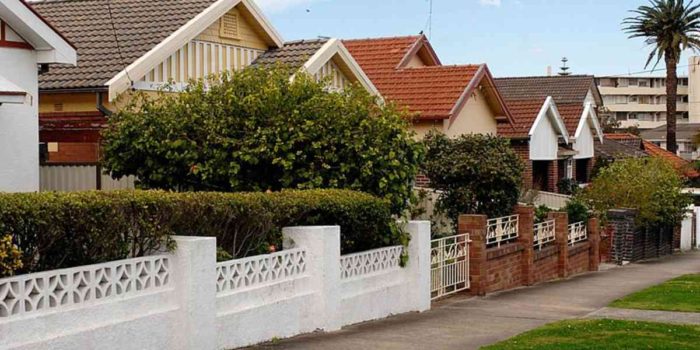High demand, low affordability and the major banks raising home loan rates independently of the RBA have dominated property in 2016.
Let’s look at what to expect in 2017.
1. Global political uncertainty will affect Australia
Brexit and Trump were quite possibly THE surprises of 2016. Expect the ramifications of both results to be felt across the global economy well into 2017.

How will Donald Tump’s administration affect our economy?
While the impact of Brexit has been largely self-contained, no-one knows how the US economy will perform with Donald Trump as president. There is no doubt we’ll see this affect the Australian economy.
2. Banks won’t move with the RBA on rates
In the current low interest rate environment, banks feel less pressured by the monthly decisions made by the Reserve Bank of Australia. In 2017 it’s feasible that they will continue to restrict lending by raising rates, particularly for investors.
Yet the RBA is likely to keep interest rates stable or perhaps even reduce rates early next year, due to other economic factors such as the surprise economic slow down we saw in the September quarter.
3. High demand is here to stay
In 2016 the REA Group Property Demand Index reached the highest level recorded. While this was partly due to a drop in the number of properties listed for sale, a surge in the number of people looking at properties was a key driver.
While demand is high nationally, conditions vary across the country. New South Wales and Tasmania are both incredibly in-demand markets, while Western Australia and Northern Territory are seeing much lower levels of demand. We’ll see this trend continue into next year.
4. Buyers will find great opportunities in Perth
The Western Australian economy is still growing, but at a far slower rate. House prices and rental rates have fallen and that’s unlikely to change quickly.
In any market, even low growth ones, there are always opportunities and Perth is no exception.

Now might be the time to invest in Perth.
Overall prices are down, yet suburbs like Peppermint Grove and Swanbourne saw substantial price increases in excess of 14% in 2016 as buyers saw an opportunity to upgrade in an otherwise slow market.
With the market nearing the bottom in Perth, buyers should see some great opportunities to invest in 2017.
5. Over development will hit some apartment markets
Clearly, not all apartment markets are challenged. However, unprecedented levels of development in Melbourne’s CBD and Brisbane’s CBD will make these the markets most likely to see price declines.

The level of apartment development in Brisbane’s CBD is a concern.
While good for affordability, the potential for price decreases isn’t great news for investors in these markets or for the banks.
Other CBD markets are seeing less development, however slow conditions in Perth are also causing concern.
6. Affordable options will shift demand
With median prices continuing to rise across all capital cities, with the exception of Perth and Darwin, the drive for affordable housing is changing behaviour.

Now might be the times to invest in property in Tasmania.
Tasmania has risen rapidly in popularity since mid 2015 on the REA Group Property Demand Index and is now seeing the highest levels of demand of all states and territories for all dwellings.
In New South Wales, central coast suburbs are increasing in popularity, driven primarily by home buyers from Sydney looking for larger, more affordable homes.
In Melbourne, the outer east is also seeing increasing interest from home buyers, again driven by the relative affordability of larger homes on bigger blocks.
7. Popular locations for sharers are where you think

Suburbs with good amenities are favoured by those seeking share accomodation.
The Gold Coast, inner-city Melbourne and Sydney’s inner west are the most popular areas in Australia for share accomodation, according to flatmates.com.au.
In these areas, the number of people looking to share far outstrips the number of listings.
Great amenities matter so good restaurants, bars, shops, and access to public transport are important to those seeking share accomodation.
8. China’s influence on Australian property is here to stay
Demand from China for property in Australia remains strong.
Chinese developers and subsequently Chinese buyers, are increasingly linked to new apartment developments in our capital cities.
Changes in 2016 included a growing interest in Brisbane as well as house and land developments.
The most popular price points for Chinese buyers also changed, as many looked to more affordable markets.
Glen Waverley, which is often the top suburb with Chinese property seekers, has seen some of the strongest price growth over the past five years and a very high number of sales over $1 million. In Sydney, Chatswood has seen a similar dynamic.



